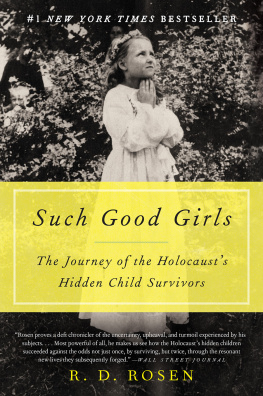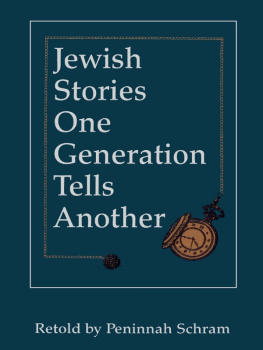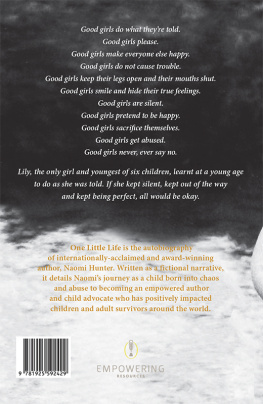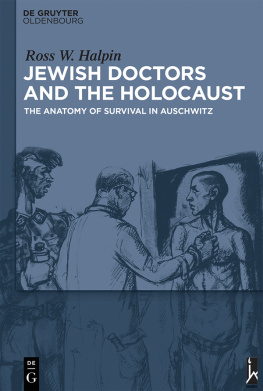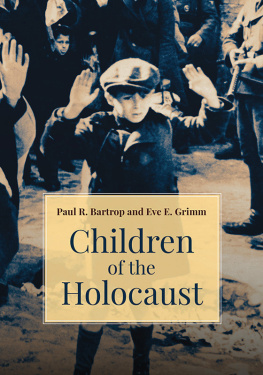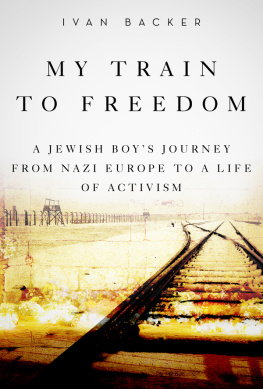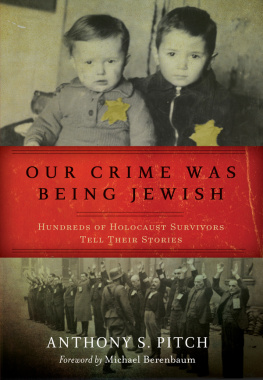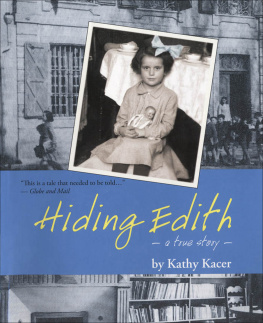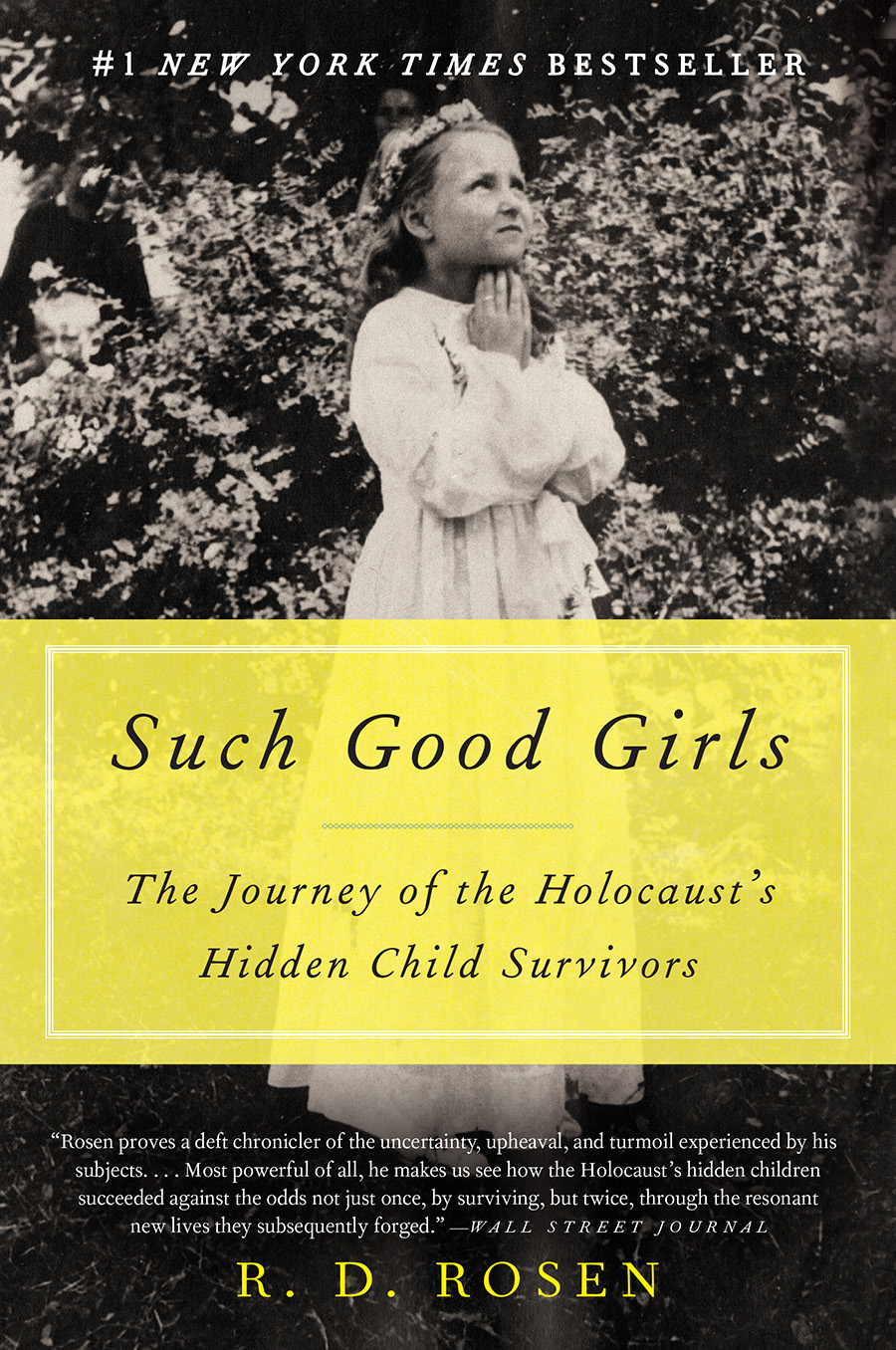In memory of my mom and dad,
always with me.
Everyone knows of course the story of Anne Frank, but
Anne Frank did not survive the war, whereas we, luckily,
did. One could say that we were fortunate, and for that
reason we have remained more or less silent to this day.
ED VAN THIJN, THEN MAYOR OF AMSTERDAM, SPEAKING AT THE
HIDDEN CHILD CONGRESS IN AMSTERDAM, 1992
It would be easier to live without remembering all the time.
A HOLOCAUST SURVIVOR IN THE
DOCUMENTARY FOUR SEASONS LODGE
CONTENTS
T he personal histories at the heart of this book are based entirely on the words of the subjects themselveswhether preserved in correspondence, family documents, other written memorabilia, or recollected in present-day interviews conducted by the author. There is, of course, no such thing as perfect recall; the passage of time alone wreaks havoc on benign memories, let alone on memories so singularly traumatic, so beyond comprehension even now. The people who experienced hiding firsthand and somehow lived to tell the talethe three women in this book, for exampleinevitably stumbled at times in the telling. On such occasions, Ive turned to the historical record for additional details or clarification. Some actual events have been enhanced with likely details and dialogue based on the recollections of my subjects and in consultation with them. Otherwise, the events, details, and emotions described herein have been neither invented nor embellished.
T his book concerns three women who were forced to adopt new names in order to survive the Holocaust. Ive tried to identify them by their original names whenever possible, but since that was not always possible to do and still maintain the integrity of their stories, Ive provided below a brief key to the names of the books major characters.
SOPHIE was born Selma Schwarzwald in 1937 in Lvov, Poland, the only child of Laura and Daniel Schwarzwald. In 1942, Selma escaped the Lvov ghetto with her mother, bearing papers identifying Selma as Zofia Tymejko and Laura as Bronislawa Tymejko, a fatherless Catholic girl and her widowed mother. In the pages that follow, Ive continued to call the mother Laura (although she was considered Bronislawa to the world), but refer to her daughter Selma by her new name, Zofia. Laura and Zofia settled first in Krakw and then in Busko-Zdrj, Poland. In 1944, they were joined by Lauras younger sister, known as Putzi, but who had been living under the name Ksenia Osoba, with the nickname of Nusia.
In 1953, Laura and Zofia, now living in London, still under their false Catholic names, obtained British citizenship. Laura chose Turner as their new family surname, and Zofia Anglicized her name to Sophie Turner until she later married David Zaretsky and became (and remains to this day) Sophie Turner-Zaretzky.
FLORA was born Flora Hillel in San Remo, Italy, in 1935, the only child of parents from Czechoslovakia. After her fathers death from tuberculosis in 1937, she and her mother, Stefanie, moved to Nice, France, in 1939 to escape Mussolini. Shortly before her mother was deported by the Nazis in 1943, Flora was handed over to convent nuns, who gave her the Christian name Marie Hamon, which she retained until reverting to Flora and taking the permanent name of Hogman, the name of the couple who hid her in 1943 in southern France and adopted her after the war. After the deaths of her adopted mother in 1956 and adopted father in 1958, she moved to New York and has remained Flora Hogman to this day.
CARLA was born Carla Heijmans in 1929 and kept her birth name until she married Ed Lessing in 1949. At that point she became, and remains, Carla Lessing.
A t the end of March 2010, a friend invited me to a Passover seder in Greenwich Village. It was one of those seders common among Manhattan types who over the years have stripped their Judaism down to a proud cultural core. We were Jews who had drifted far from regular Shabbat dinners, synagogues, and bar and bat mitzvahs, but we clung to the Passover seder as the one unsinkable ritual of our Jewish upbringings. It was a time to relive the raucous seders of our childhoods and celebrate the emancipation of the Jews from Egyptian bondage, as well as the freedoms that we all took for granted in the most Jewish big city in the freest country in the world.
The trees were just budding outside the apartments casement windows on West Twelfth Street when the ten of us sat down at the long table. I didnt know all of the people, but we were a familiar assortment of savvy, secular, casually dressed types: a cable TV executive, a novelist, an editor, a lawyer, a real estate agent, a doctor. We ranged in age from our thirties to our seventies.
There was just one person at the table who didnt quite fit: an affable woman in her seventies with a cherubic face and close-cropped blond hair who had come alone and was seated directly across from me with a colorful scarf loosely knotted around her neck. She had the appealing air of someone perpetually on the verge of laughing. Among the darker-haired guests, she didnt look Jewish, but she seemed well enough acquainted with the feasts rituals and laughed with everyone else when we complained of the interminable wait for each installment of the meal, stole pieces of matzoh and sips of wine, and interrupted our reading of the Haggadah to complain of its historical inaccuracies and improbabilities.
But her fair coloring and faint European accent, which was hard to place, made her stand out from the rest of us irreverent Reform Jews at the table. At the first real break in the proceedingssomewhere between the gefilte fish and the chicken soupI asked her about herself. For all I knew, this was her first seder and I didnt want her to feel uncomfortable. She said her name was Sophie Turner-Zaretsky, that she was a retired radiation oncologist and was distantly related to the host.
I cant place your accent, I said. Where did you grow up?
Poland.
Oh, Im half Polish, I said, glad to have something in common. On my fathers side. Warsaw. So you were in Poland during the war?
Yes, she said.
What were you doing?
Hiding, she replied softly and with no more emotion than if she had been telling me what movie she had seen the night before.
With that one word, of course, all my assumptions about her collapsed. She was a Jew after all, and one whose childhood put the rest of ours in stark perspective. I quickly calculated that, if she were in her seventies, then she had been a little girl during the war.
I felt that uncomfortable twinge of privilege that I often experience when confronted with those less fortunatelet alone someone who really happened to wake up on the wrong side of historys bed. I didnt know quite what to say. Had her parents been murdered? How many European Jewish children had survived the Holocaust? I had no idea. All I knew was that Sophie had grown up in one of the very worst places in history to be a Jew.
On the other hand, I had grown up in one of the safest places ever, a lakefront suburb of Chicago that had been hospitable to Jews since at least the 1920s. My four grandparents had found their way from Shkud, Lithuania; Chvanik, Belorussia; and Warsaw to Chicago in the early part of the twentieth centurya quarter century before the Nazis invaded Poland. My parents, born here, grew up in the urbanized shtetls of Chicagos west side, enveloped by family, before joining the new diaspora to the suburbs in the 1950s. Highland Park, twenty-odd miles north of the city, had actually become famous for its overprotected, entitled children. In 1960, when I was in sixth grade, the town was singled out in a

